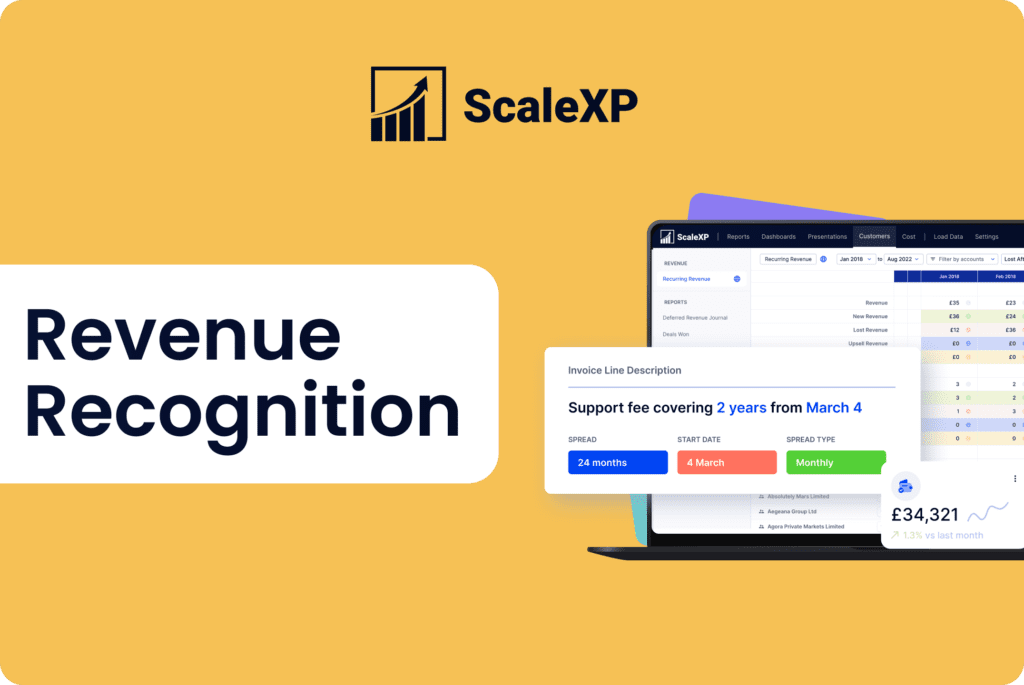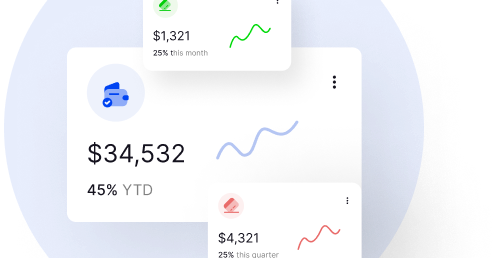What is ASC 606?
ASC 606 is a revenue recognition standard issued by the Financial Accounting Standards Board (FASB) in the United States. It sets out the principles for recognising revenue from contracts with customers and replaces the previous revenue recognition guidance, ASC 605.
ASC stands for “Accounting Standards Codification.” ASC 606 was developed by FASB working in conjunction with the International Accounting Standards Board (IASB) an independent private sector body that develops International Financial Reporting Standards (IFRS), with the intent of simplifying revenue recognition in the US and converging guidance internationally.
Does ASC 606 apply to my SaaS company?
ASC 606 applies to all entities that that generate revenue from contracts with customers, including public and private companies, as well as non-profit organisations. In the United States, public companies were required to comply with ASC 606 for annual reporting periods after December 2017 while private companies were required to comply for annual reporting periods after December 2018.
It’s important to note that compliance with ASC 606 is not just a one-time event. It requires ongoing monitoring and updating of revenue recognition policies and practices, ensuring continued compliance with the standard.
At ScaleXP, our platform is built for finance teams and leaders to automate tasks such as revenue recognition, whilst being compliant to both IFRS15 and ASC606, saving businesses both time and hassle when calculating their finances. You can check us out with a 7-day free trial to see our platform in action.
What does FASB say about revenue recognition?
The FASB’s standard, ASC 606, outlines a five-step model for recognising revenue from contracts with customers:
- Identify the contract with the customer.
- Identify the performance obligations in the contract.
- Determine the transaction price.
- Allocate the transaction price to the performance obligations.
- Recognise revenue when (or as) the entity satisfies a performance obligation.
The ASC 606 guidance applies to all types of revenue-generating transactions, including the sale of goods, services, and intellectual property licenses.
How does it apply to software or SaaS companies?
Here are five examples of how ASC 606 applies to software or SaaS companies:
Perpetual license
If a software company sells a perpetual license to a customer, revenue recognition will typically occur at the point in time when the license is delivered to the customer. The amount of revenue recognised will be equal to the transaction price agreed upon by the company and the customer. The entire amount will be recognised as a lump sum.
Software sold as a subscription
If a software company sells a subscription to a customer, revenue recognition will occur over the subscription period. This means that revenue will be recognised each month (or other subscription period) as the company delivers the service to the customer. In an annual subscription, revenue will be recognised in monthly increments.
Upgrades and enhancements
If a software company offers upgrades or enhancements to its software to existing customers, revenue recognition will depend on the terms of the contract with the customer. If the upgrade or enhancement is considered a separate performance obligation, revenue recognition will occur when the obligation is satisfied. If the upgrade or enhancement is not a separate performance obligation, revenue recognition may occur at the same time as the original software sale.
For most SaaS companies, this means that the upgrade is recognised over the subscription term.
Professional services
If a software company provides professional services (such as implementation or customisation services) to its customers, revenue recognition will typically occur over the period that the services are delivered. This may involve recognising revenue over the course of a project, as milestones are achieved, or as services are performed.
Maintenance and support
If a software company provides maintenance and support services to its customers, revenue recognition will typically occur over the period that the services are provided. This may involve recognising revenue monthly, as the company delivers the services to the customer.
Key ASC 606 compliance criteria for SaaS
For SaaS companies, ASC 606 requires them to recognise revenue over the contract period instead of recognising it upfront at the time of sale.
To comply with ASC 606, subscription or SaaS companies must ensure that they have accurate and complete information about their contracts with customers, including the contract terms and details on pricing by service.
What are the major differences between ASC 606 and IFRS15?
ASC 606 and IFRS 15 aim to ensure correct revenue recording and recognition. Both provide clear guidance, but there are differences:
Collectability threshold
ASC 606 requires probable collectability, while IFRS 15 requires it to be more likely than not.
Contract modifications
ASC 606 has narrower criteria for separate contract accounting compared to IFRS 15.
Contract asset/liability presentation
ASC 606 has specific guidance, while IFRS 15 allows more flexibility.
Contract costs
ASC 606 requires capitalisation of certain fulfilment costs, whereas IFRS 15 has only general guidance.
Variable consideration constraint
ASC 606 uses a “probable” threshold, while IFRS 15 uses a “highly probable” threshold.
Licenses
ASC 606 distinguishes between functional and symbolic intellectual property, while IFRS 15 does not.
Sale with a right of return
ASC 606 provides specific guidance, while IFRS 15 uses general variable consideration guidance.
These differences show the primary distinctions between ASC 606 and IFRS 15 in revenue recognition.
What are the major differences between ASC 606 and ASC605?
ASC 606 and ASC 605 are US accounting standards that offer guidelines for recognising revenue. ASC 606, the newer standard, replaced ASC 605 due to its limitations. Here are some key differences between the two:
1. Scope
ASC 606 applies to all industries and entities, while ASC 605 primarily applied to industries with specific revenue recognition guidance.
2. Core Principle
ASC 606 focuses on recognising revenue when an entity transfers goods or services to a customer for the expected payment amount. ASC 605 lacked a consistent principle and was based on industry-specific guidance.
3. Five-Step Model
ASC 606 introduces a five-step model for recognising revenue, while ASC 605 had no structured framework and instead used various specific rules and criteria.
4. Performance Obligations
ASC 606 emphasises identifying distinct performance obligations within a contract, whereas ASC 605 generally treated contract elements as separate accounting units only if they met specific criteria.
5. Variable Consideration
ASC 606 permits estimating variable consideration as part of the transaction price, subject to a constraint. ASC 605 required variable consideration to be fixed or determinable before recognising revenue.
6. Contract Costs
ASC 606 provides guidance on capitalising and amortising certain contract acquisition and fulfilment costs, which ASC 605 did not address explicitly.
6. Disclosures
ASC 606 requires more comprehensive and qualitative disclosures than ASC 605 to help financial statement users understand contracts with customers better.
These differences illustrate the primary distinctions between ASC 606 and ASC 605. Implementing ASC 606 aimed to improve financial reporting consistency, comparability, and usefulness related to revenue recognition.
How can software make compliance easier?
SME accounting systems including Xero and QuickBooks do not contain the functionality to comply with ASC 606. Add-on software, such as ScaleXP, can help. ScaleXP imports all invoices directly from the accounting system and uses a sophisticated series of text recognition algorithms to fully automate revenue recognition. The setup process is easy, and in most cases, you can have a full revenue recognition schedule within an hour.
Click here to see if ScaleXP integrates with your accounting platform.
If your company operates outside the USA, click here to read our article on revenue recognition under IFRS 15, issued by the International Accounting Standards Board (IASB).









